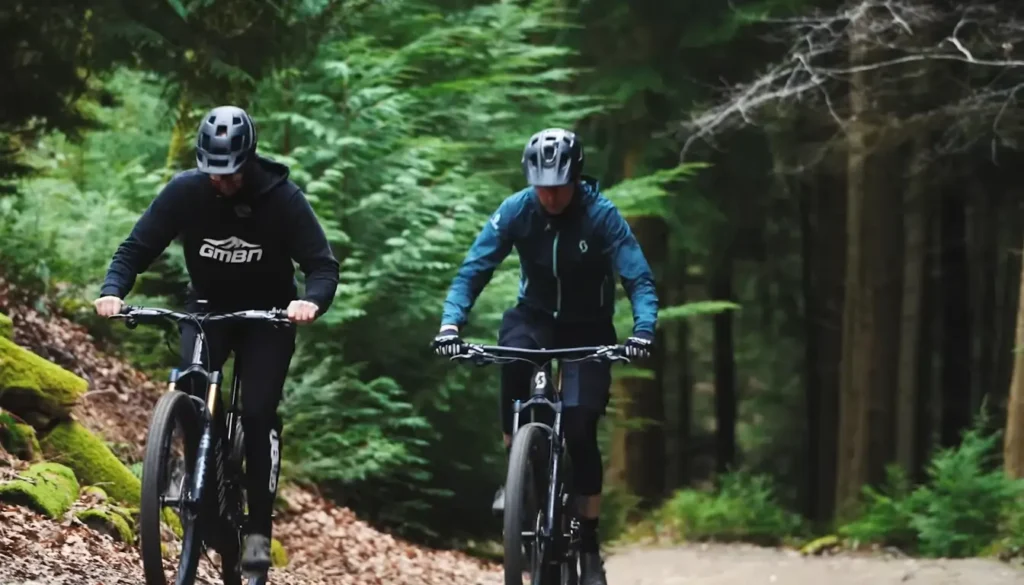Cycling is a great way to get some cardio and get out into nature. There are many reasons why you should ride a mountain bike.
First, it will give you a workout because you will pedal up hills. Riding a mountain bike is also good for your cardiovascular system because it forces you to keep moving even when you are tired.
Lastly, you will burn calories as you go uphill. As you pedal harder, you will use more oxygen, which means your body will work harder and burn more calories. This makes riding a mountain bike a healthy alternative to running.
In this article, we’ll discuss the potential benefits of mountain biking for weight loss and fitness maintenance.
Why You Need to Understand Fat
Before you go any further, you must understand fats and how they accumulate in the body. Whenever there is a shortage of usable energy, the body turns to its stored fats for fuel. So when our bodies have used up the energy provided by the meal we recently ate, this fat reserve helps us keep going.
Many people eat more than they need to because they don’t realize how much energy food provides. Our bodies convert and store this energy into fats, as is their will, for later use.
Due to our sedentary lifestyles, the body never uses these energy reserves.
This implies that they will remain in our system and add to the fats we ingest daily. This process repeats itself until you have gained enough weight to see a difference in your physical stature.
How much is abdominal fat lost while mountain biking?

Due to the extra energy expended when riding the trails, mountain biking is one of the finest ways to lose weight. But, of course, if a person is trying to lose weight, the body will look first at the belly (or hips in the case of women) and hips.
If you don’t eat more calories and begin mountain biking, you will begin to lose belly fat. However, it’s important to remember that you need to be in a calorie deficit for this to occur.
You need at least seven and a half hours of sleep every night to benefit from your fat-loss efforts. In addition, Overtraining and injuries are certain outcomes if you push yourself too hard on the trails and forego enough rest.
How to burn 500 calories mountain biking?
Although the average rider should expect to burn around 500 calories in under an hour, this number is extremely variable depending on the rider’s weight and the intensity with which they pedal.
To burn 500 calories while riding, a person who weighs 200 pounds requires only 30 minutes, whereas someone who weighs 154 pounds needs roughly 50 minutes. This assessment assumes that cyclists face similar weather and terrain and that the course features no significant uphill sections.
How to Lose your weight by riding a Mountain bike
Mountain biking is great for anyone who wishes to maintain a healthy weight, lose weight, or avoid getting fat.
Mountain riding is a cardiovascular workout, unlike anaerobic exercises like free weights, push-ups, and shuttle sprints. As a result, you can maximize weight loss results.
Step One: Baby-Step
To achieve a big objective, start small. Divide your goal into doable bits. First, go on a half-hour mountain bike adventure.
Cycling at a moderately demanding pace is most significant. First, stick to paved roads, fire lanes, or sidewalks where you can keep a steady pace. Try to cycle for 100 minutes every week.
Step 2: Longer rides
Increase the length of your rides to lose weight. According to the Clinical Journal of Sports Medicine, extending workout duration is superior to increasing intensity.
Try to cycle 150 minutes per week. More effort may yield better outcomes. Don’t let the weather stop your mountain biking.
Step 3: Challenge yourself
After getting used to longer rides, increase the intensity. Consider taking on a bigger challenge. Choose less trafficked, rocky, or higher elevation routes to increase run difficulty.
This may limit your cycling speed owing to the increasing effort, but it will result in a more intense body workout and a higher heart rate. Increasing your workout intensity won’t help you reduce weight if you don’t keep your workout length steady.
Stage 4: Watch Your HR
Taking your pulse regularly, either with a monitor or manually, can help track your weight loss progress. Align your middle and index fingers on your right hand to check your pulse.
Position both fingers over the arteries and veins under your left thumb at the wrist. Multiply the number of beats you feel in 10 seconds by 6 to get your heart beat rate per minute.
Alternatively, a heart rate monitor can be used. A healthy pulse rate is between 50 and 85% of a person’s maximum rate. Your age minus 220 gives you a ballpark maximal heart rate.
A 40-year-optimum old’s heart rate is 90 to 153 beats per minute, with a maximum of 180. If you wish to track your heart rate while losing weight on a mountain bike, get a baseline reading before starting the program and again after a week of riding. Compare the two methods’ results.
Step 5: Monitor your metabolism
A 190-pound individual will burn about 649 calories per hour mountain riding, whereas a 133-pound person will burn about 433 calories. But, of course, your real calorie burn rate depends on your workout intensity and work pace.
Two people of the same age, weight, and regimen are unlikely to burn the same number of calories. Variations in production are caused by physical factors, including effort levels.
A heart rate monitor with a calorie-counting feature can estimate calories burned based on exercise intensity and weight.
Step 6: Reduce calorie intake.
Weight loss isn’t enough. As I said in the introduction, fat accumulates when we consume more calories than our bodies need. Healthy nutrition and frequent exercise can help you decrease 500 to 1,000 calories per day while monitoring your metabolic rate.
If you aim to shed 650 calories a day and mountain biking burns 400, lower your intake by 250. One to two pounds per week is acceptable if the daily calorie deficit is 500 to 1,000.
Exercise with mountain biking
Remember that you want to lose weight and tone your body to look a certain way. Therefore you’ve decided to go on a weight reduction program that involves mountain biking to accomplish this. However, there are several workouts that not only help you burn calories on their own but also improve your endurance when you’re out hiking.
While the benefits of mountain biking are most apparent in the lower body and the cardiovascular system, additional beneficial workouts combined with mountain biking will yield even greater benefits due to their effects on the upper body.
You should consider incorporating the following routines or challenges into your mountain bike weight loss program if you want to develop good ab muscles, stronger shoulders, and other body portions in addition to reducing weight.
Conclusion
In conclusion, we can state that reducing your overall body fat percentage is necessary if you want to lose fat and that mountain biking is an excellent way to do it, provided that you ride regularly and abstain from bad eating habits like fast food, alcohol, and sugary drinks.

I am Ryan Ford, a mountain biking enthusiast who loves to explore the outdoors. I also like to go on adventures with friends and anything else that involves being outside. I love my bike because it gets me out of the house and gives me an opportunity to enjoy nature.

